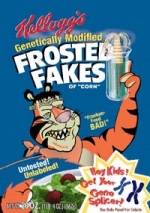 Confrontation is ongoing between large agriculture related businesses, like Monsanto and Bayer, and consumers. The dilemma is that we have over seven billion people on the planet, and since the green revolution, we have traded stewardship of the environment for feeding the world. The ethical practices of Monsanto and the production of GM (genetically modified) crops have often been questioned; recently, a new lawsuit has been filed against the ag giant and it will be interesting to see how it plays out. Some background on Monsanto from their website:
Confrontation is ongoing between large agriculture related businesses, like Monsanto and Bayer, and consumers. The dilemma is that we have over seven billion people on the planet, and since the green revolution, we have traded stewardship of the environment for feeding the world. The ethical practices of Monsanto and the production of GM (genetically modified) crops have often been questioned; recently, a new lawsuit has been filed against the ag giant and it will be interesting to see how it plays out. Some background on Monsanto from their website:
The company was founded in 1901, but did not start producing herbicides (like 2, 4-D) until 1945. This led to the establishment of a strong science division focused on cellular biology. In the eighties, Monsanto acquired a soybean seed company and started experimenting with the production of GM crops and growth hormones for dairy cows. The mid-nineties were a big time for Monsanto. The first and most notable of Monsanto’s products, Roundup Ready Soybeans, was introduced to the market along with crops that had built in pesticide resistance. In the late-nineties, Roundup Ready Corn was introduced and Monsanto was incorporated into Pfizer (the reason you have heard of Pfizer: they make Viagra).
 Farmers have become reliant on GM crops, and, for the few holdouts that do not use GM crops, contamination of non-GM crops has become a big issue. Contamination would be genes from a GM plant “escaping” the original crop by breeding with “normal” plants or seeds flying around when planting. To try and keep genes from spreading into plants that were not created at Monsanto, a buffer zone was to be used. However, a buffer of ten meters does not mean much to wind pollinated plants like corn or bee pollinated plants like soybean. In fact, the most notable dastardly deed that Monsanto has under its belt is suing farmers in Canada that have genetically contaminated crops through no fault of their own — the most famous case being Percy Schmeiser v. Monsanto. A neighboring farmer accidentally planted Schmeiser’s fields during a windy day. A Monsanto investigator took samples of the plants near the road in Schmeiser’s field and found that they are Roundup Ready canola plants for which Schmeiser does not have a license. During this time period, Monsanto was accused of using a plane to spray Roundup in canola fields in Saskatchewan to try and find more small farms to sue. To make this extremely long example a little shorter, Monsanto won the case against Schmeiser setting a bad precedent that continues today — Monsanto cannot control the small instances of its patented Roundup Ready plants escaping, so they sue the little guy when the infringement is actually wind. Maybe Monsanto will find out how to sue the wind and stop it from spreading canola seeds?
Farmers have become reliant on GM crops, and, for the few holdouts that do not use GM crops, contamination of non-GM crops has become a big issue. Contamination would be genes from a GM plant “escaping” the original crop by breeding with “normal” plants or seeds flying around when planting. To try and keep genes from spreading into plants that were not created at Monsanto, a buffer zone was to be used. However, a buffer of ten meters does not mean much to wind pollinated plants like corn or bee pollinated plants like soybean. In fact, the most notable dastardly deed that Monsanto has under its belt is suing farmers in Canada that have genetically contaminated crops through no fault of their own — the most famous case being Percy Schmeiser v. Monsanto. A neighboring farmer accidentally planted Schmeiser’s fields during a windy day. A Monsanto investigator took samples of the plants near the road in Schmeiser’s field and found that they are Roundup Ready canola plants for which Schmeiser does not have a license. During this time period, Monsanto was accused of using a plane to spray Roundup in canola fields in Saskatchewan to try and find more small farms to sue. To make this extremely long example a little shorter, Monsanto won the case against Schmeiser setting a bad precedent that continues today — Monsanto cannot control the small instances of its patented Roundup Ready plants escaping, so they sue the little guy when the infringement is actually wind. Maybe Monsanto will find out how to sue the wind and stop it from spreading canola seeds?
 Speed forward to spring 2013. Japan will not import any GM crops or seeds and the European Union will import GM foods, but will not allow GM crops to be grown. Monsanto is still a large producer of new GM crops and had been experimenting with soft white wheat, but the FDA has not approved GM wheat. This past May, a small grower in Oregon found GM wheat in a fallow field; however, the last testing of GM wheat in the U.S. was in 2005 and has since been abandoned. The presence of GM wheat caused Japan to stop (likely temporarily) all import of wheat from Oregon and Washington. So the farmers turned the tables and are suing Monsanto for loss of revenue. A statement made by a Monsanto representative indicated that they believe sabotage is a possibility and that the seeds were planted deliberately with malicious intent. This seems unlikely because the majority (est. at 90%) of Oregon’s wheat crop is exported and now Japan, the largest importer, has halted all wheat imports and U.S. farmers will lose money. It will be interesting to see if the USDA will actually be able to determine how Roundup Ready plants that have not been tested in Oregon since 2001 got into a field in 2013.
Speed forward to spring 2013. Japan will not import any GM crops or seeds and the European Union will import GM foods, but will not allow GM crops to be grown. Monsanto is still a large producer of new GM crops and had been experimenting with soft white wheat, but the FDA has not approved GM wheat. This past May, a small grower in Oregon found GM wheat in a fallow field; however, the last testing of GM wheat in the U.S. was in 2005 and has since been abandoned. The presence of GM wheat caused Japan to stop (likely temporarily) all import of wheat from Oregon and Washington. So the farmers turned the tables and are suing Monsanto for loss of revenue. A statement made by a Monsanto representative indicated that they believe sabotage is a possibility and that the seeds were planted deliberately with malicious intent. This seems unlikely because the majority (est. at 90%) of Oregon’s wheat crop is exported and now Japan, the largest importer, has halted all wheat imports and U.S. farmers will lose money. It will be interesting to see if the USDA will actually be able to determine how Roundup Ready plants that have not been tested in Oregon since 2001 got into a field in 2013.
Photo credits: Canola plants by Simone Demers Collins, PHEc; Frankentony courtesy of Greenpeace.








